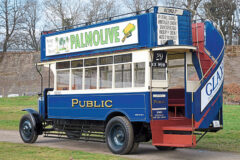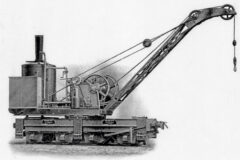Beautifully-restored electric-powered milk float
Posted by Chris Graham on 23rd June 2023
The electric-powered milk float was a common sight 50 years ago, but survivors are rare. Bob Weir meets Paul Nicolls and his superb example.
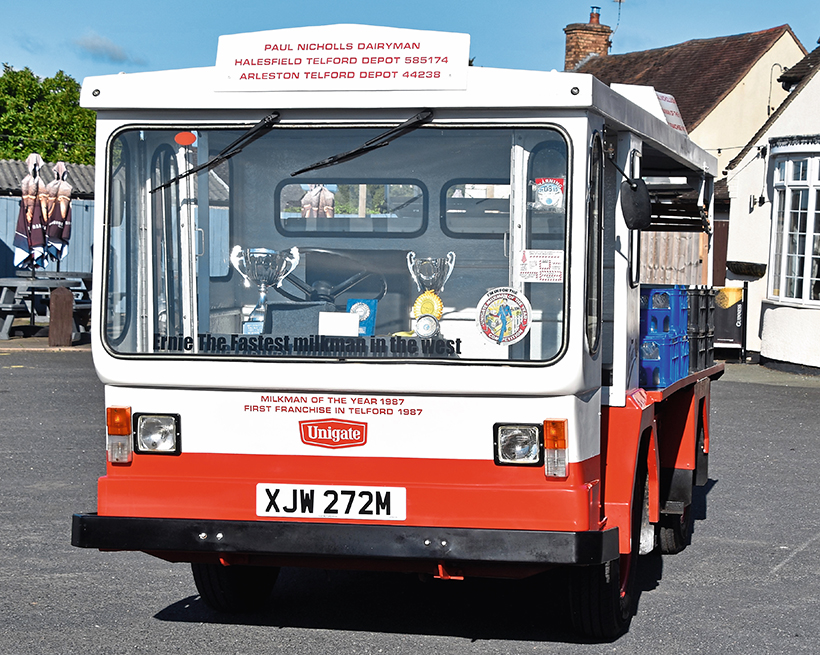
Paul Nicolls’ beautifully-restored, mid-1970s, electric-powered milk float.
Though most people think of electric cars as the latest thing, battery electric road vehicles (BERV) have actually been around since pre-war times, and had clear environmental benefits in the smog-laden cities of the 1930s, 1940s and 1950s. Unfortunately though, the concept was held back by the weight of the lead-acid batteries needed, and the only ‘industry’ to adopt electric power to any extent was doorstep milk delivery. Here, electric power had an additional benefit – it was far more socially acceptable at 5.30am than the noisy diesels of the time.
The Morrison-Electricar was at the cutting edge of BERVs, and its first vehicle was built for a local bakery in 1933. Founder Alfred Morrison had dabbled for years in various engineering projects but, by the late 1920s, was concentrating on producing electric motors. These advanced designs were DC-powered, with a nickel frame and ran at constant speed.
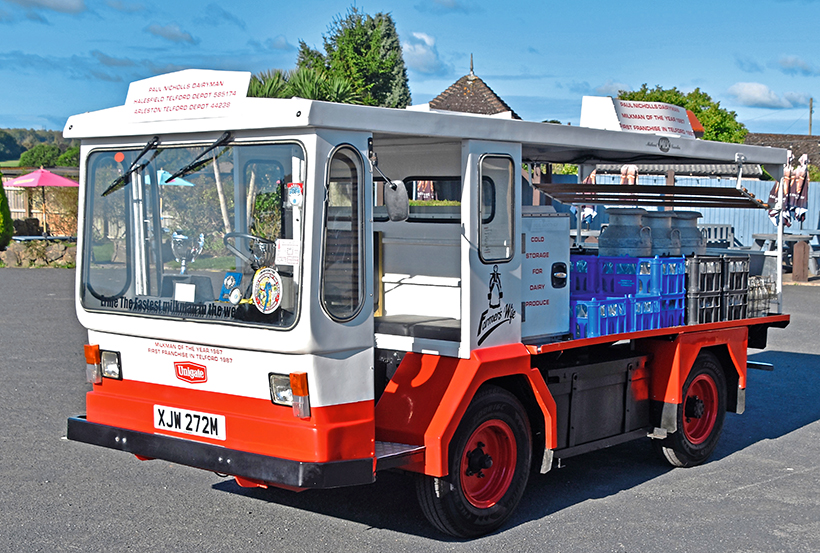
Classic Unigate livery was once part of the early-morning street scene pretty-much everywhere.
The company became AE Morrison & Sons in 1929 when the founder was joined by relatives, including his eldest son. Following a discussion with a baker friend while out on the golf course, Morrison senior built a prototype electric vehicle within the short timeframe of a month. Following trials, the vehicle was modified with a stronger chassis and longer wheelbase, and the baker took delivery later in the year.
This vehicle, registered JF 4231, kicked off the Morrison-Electricar story, and the company soon had a full order book. The vehicles came in two sizes; the Terrier and the larger Mastiff, capable of carrying up to 30cwt. Morrisons soon had a thriving export market, with the vehicles being shipped overseas in kit form.
In 1935 production moved to a new factory in South Wigston, Leicestershire. The extra space allowed them to build complete vehicles, whereas the bodies had previously been outsourced to Brush Electrical Engineering, based in Loughborough.
The vehicles were available in six chassis types, with payloads ranging from 5/8 cwt to 60cwt. They could be equipped with an open-deck body for milk delivery, a closed van or flat body, while more specialist designs were produced for tasks like refuse collection.

The milk float from the rear.
AE Morrison & Sons joined the Associated Electric Vehicle Manufacturers (AEVM) business group in 1936, and struck up a close relationship with Birmingham-based Electricars which had been in business since 1919. Most of its product range was copied from American designs, and was sold to local authorities. The two companies worked together, and Morrison concentrated on smaller, sub-40cwt vehicles. Eventually, in 1941, AEVM was taken over by electrical manufacturing company Crompton Parkinson.
Morrison’s output increased substantially in the run up to WW2 and, during the war like most manufacturing businesses, it switched to military supplies. Production of electric vehicles at Electricars was ended, the final batch were assembled at Morrison’s factory in Leicestershire.
Post-war, Morrisons went through a series of corporate changes. These involved the Austin Motor Company and, subsequently, BMC and British Leyland. By the time of the change from BMC to BL in 1968, the electric vehicle business had evolved into Crompton Leyland Electricars Ltd.

Quick and easy access for the driver was an important consideration in the design of electric floats.
Further rationalisation followed involving aircraft manufacturer Hawker Siddeley, which renamed the company Crompton Electricars Ltd. The floats stayed in production for several years until M&M Electric Vehicles from Atherstone, Warwickshire, bought what was left of the business in 1983. This was effectively the end of Morrison-Electricar but to its credit, M&M retained the Electricars name and used it on its own vehicles.
Shropshire-based Paul Nicolls was a milkman for many years. “I helped deliver milk when I was only six years old,” he explained. “When I left school I worked on a dairy farm, before becoming a full-time milkman.” Home delivery was still an important source of revenue for businesses in the 1970s, before the introduction of retail parks and shopping malls.
“Rain or shine you were on your round,” Paul recalls. “I worked as an employee in the early years before the company introduced a franchise system. This was quite challenging at first as the profit margin was small, but it was satisfying running your own operation.” This continued until the mid-1990s, when Paul decided to call it a day.
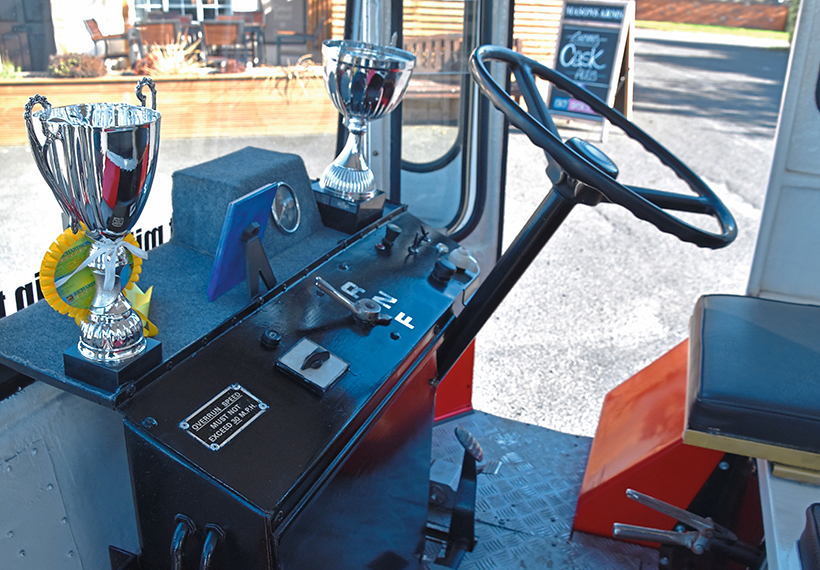
Cab, showing the very simple controls and Paul’s prized Milkman of the Year trophies from 1987.
“Unigate had started taking over my old company Midland Counties in the early 1960s and, by the 1990s, customers’ shopping habits had changed,” he said. “Doorstep deliveries were on the decline, even though we were offering other products besides milk. Supermarkets were undercutting our prices and taking more of the business. Unigate eventually sold out to Dairy Crest, and I switched to driving lorries.”
Paul is interested in old commercials and likes going to vintage vehicle shows. He decided to track down one of his old milk floats, with a view to restoring the vehicle and taking it to rallies. “Back in the 1970s, our local milkman used to drive XJW 272M, which is a model F16 and was first registered on February 4th, 1974,” he recalls. “I used to help the milkman out when I was 12 years old, and still had fond memories of the vehicle. But I had no idea at that stage whether the float was still around, so decided to make some enquiries.”
Paul got hold of an old fleet list and discovered that XJW 272M was the only one left from the original fleet. “I tracked the vehicle down to B&A Dairies Ltd, in Coventry,” he explained. The dairy is unusual because it still operates a small fleet of electric floats. Some of the vehicles have been in service for over 40 years.
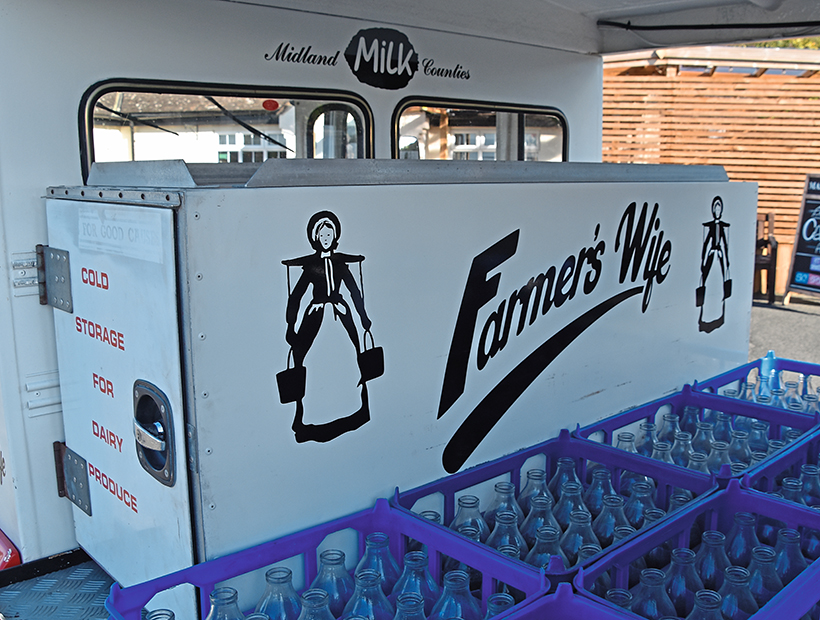
The cold storage for the other dairy products delivered by milkmen, such as cream and yoghurt.
According to Paul, Morrison-Electricar vehicles from this era came in two types. “The vehicles were all one-speed until the first two-speed versions turned up at the dairy in 1975,” he explained. “These were designed for rural areas and had a longer range of 40 miles. Most of the one-speed floats were replaced, and I was surprised that XJW 272M had survived.”
Having tracked down his old milk float, Paul didn’t waste any time making an approach to the vehicle’s new owners. “I was able to make a deal with B&A Dairies in 2020,” he recalls. “Although I was understandably very pleased, I knew there was still a lot of work to be done. The float was in poor condition and needed refurbishment. So I decided to get some help and enlisted the services of local expert and enthusiast, Sam Leason.”
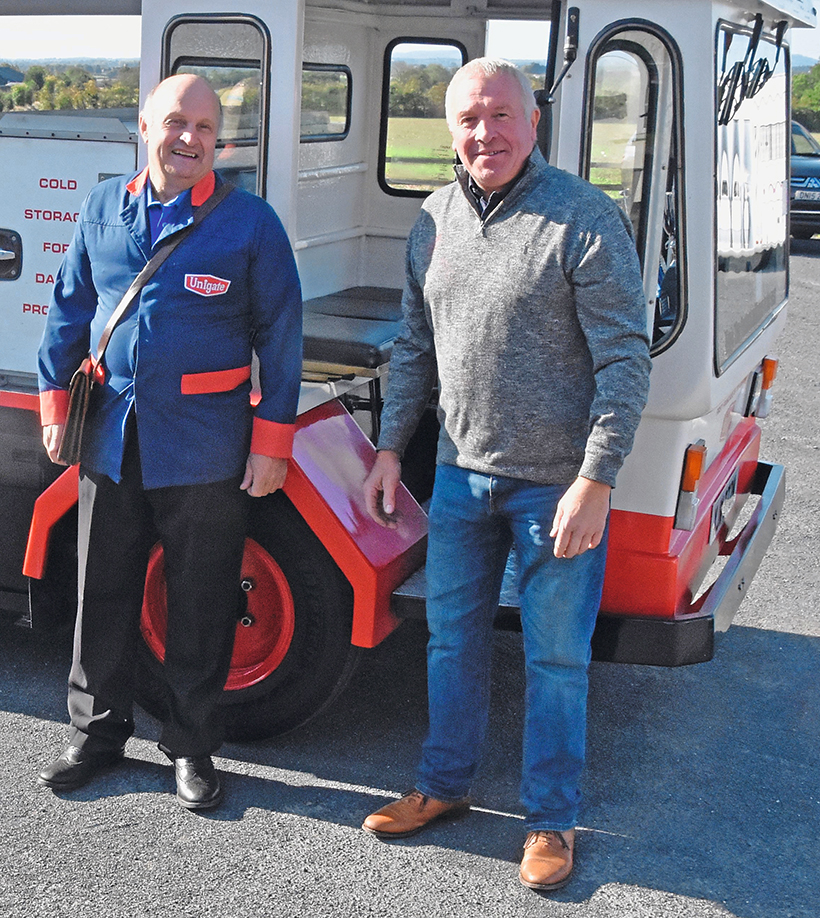
Paul with Sam Leason. Sam’s company did the lion’s share of the refurbishment.
Sam is an expert at renovating bodywork and currently runs his own company. “We’ve got a mutual friend, who introduced us to each other,” Sam explained. After discussing the project, Sam agreed to work on the float between other jobs when he could find the time. In the end, the restoration took almost a year to complete. Sam recalls he certainly had his work cut out. “There were holes in the chassis and the outriggers on the rear suspension were shot. I reckon if the float had been driven over a speed bump, the rear end would have probably fallen off!”
Now that he’d agreed to help, Sam’s first task was strip the float down to the bare bones. “My company specialises in shot-blasting, so everything had to come off,” Sam explained. “This included the body and wheel arches. The rest of the chassis was put up on a ramp.” Although the cab and wings were made of glass-fibre, electric floats of this era were prone to rust as the rest of the vehicle was made of steel. Like most commercial vehicles, they were also vulnerable to wear and tear.
“I still remember when Paul asked me to check the driver’s side battery box,” Sam said. “To my amazement I found that the only thing that was keeping the 18 batteries in place was a plastic sheet, because the battery acid had rotted through the metalwork. This meant that the box had to be completely rebuilt.” Sam also recalls he had a particular problem sorting out the float’s cab doors.

Proud owner Paul demonstrating the delivery technique that won him the Milkman of the Year award.
“I had difficulty getting hold of the right bearings,” he said. “Fortunately, the internet came to the rescue, and I found a supplier in South Korea. The brakes also had to be replaced together with a lot of the mechanics. Some of the original parts were still on board, and we’ve tried to retain these where possible.” Most of the work was completed by the end of 2021, and Paul could look forward to rallying the milk float in the New Year.
“I covered about 10 shows in 2022, and the vehicle was well received by other enthusiasts,” Paul said. “The shows were all local because the float has to get there under its own power. When you’re driving any distance, you have to be careful not to overcook the battery cells, but that comes with practice.”
A fine restoration.
This feature comes from the latest issue of Classic & Vintage Commercials, and you can get a money-saving subscription to this magazine simply by clicking HERE



